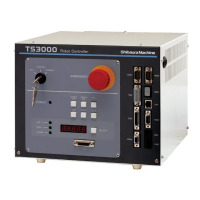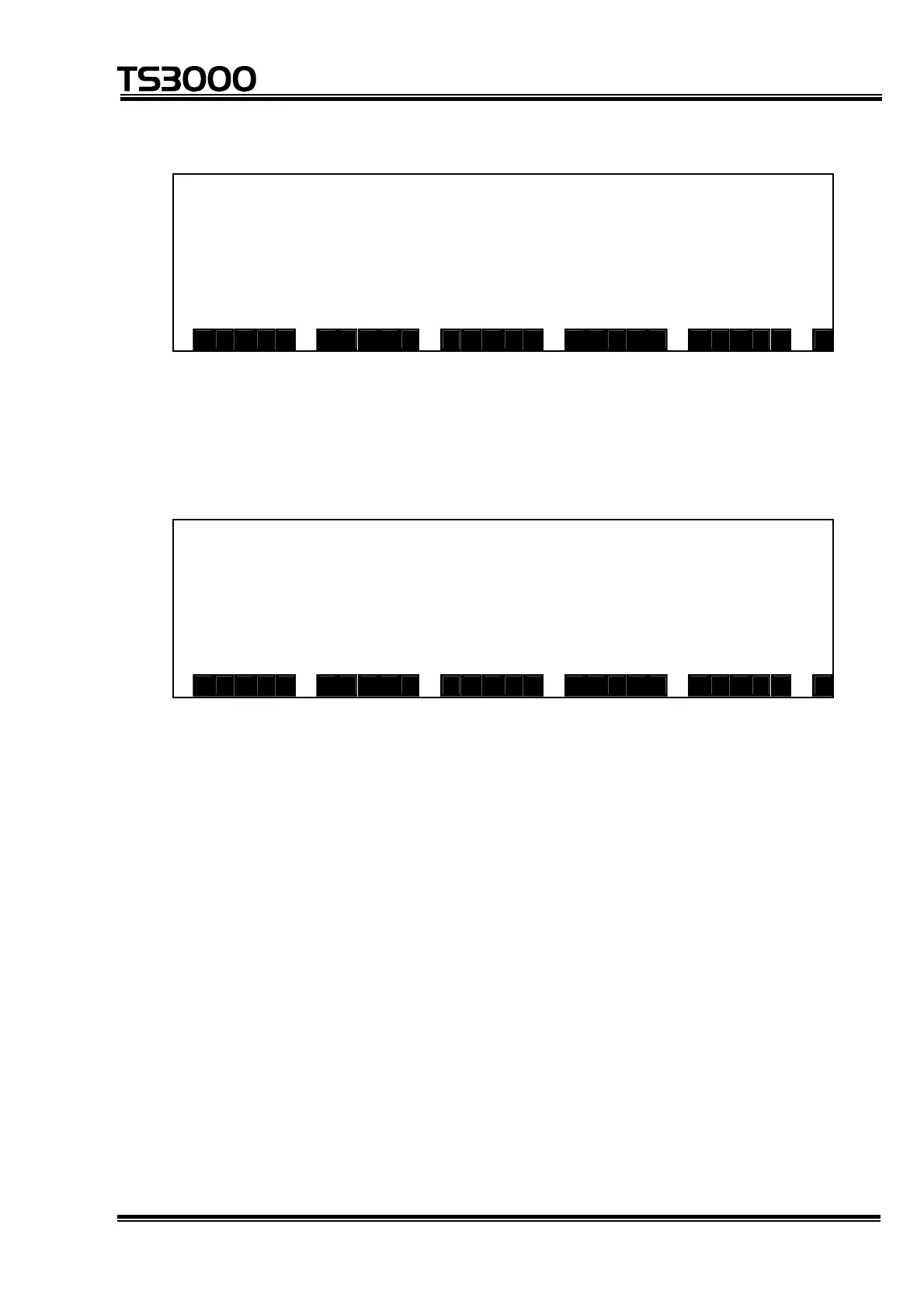STE 80720
– 10-52 –
OPERATOR’S MANUAL
series Robot Controller
[Page 2]
E T H E R N E T S T A T U S [ 2/3]
O w n P o r t C o n n e c t I P P o r t
I P 0 1 0 0 0 0 0 0 . 0 0 0 . 0 0 0 . 0 0 0 0 0 0 0 0
I P 1 0 0 0 0 0 0 0 . 0 0 0 . 0 0 0 . 0 0 0 0 0 0 0 0
I P 2 0 0 0 0 0 0 0 . 0 0 0 . 0 0 0 . 0 0 0 0 0 0 0 0
I P 3 0 0 0 0 0 0 0 . 0 0 0 . 0 0 0 . 0 0 0 0 0 0 0 0
• IP0 to IP3: Ethernet channel number
• OwnPort: Robot port number
• Port: Port number of the other connected device
• Connect IP: IP address of the other connected device
[Page 3]
E T H E R N E T S T A T U S [ 3/3]
A p p . M o d e S t a t u s
I P 0 H O S T T C P / S L I S E N
I P 1 S C O L T C P / C C L O S E D
I P 2 S C O L T C P / S C L O S E D
I P 3 S Y S T E M T C P / S C L O S E D
• IP0 to IP3: This indicates the Ethernet channel number.
• App.: Name of application using the channel
The connection in the control status from robot language uses
simple protocol when HOST is shown and uses non-protocol
communication when SCOL is shown.
• Mode: Protocol type, open status
TCP/S indicates a server connection using TCP protocol, and
TCP/C indicates a client connection using TCP protocol.
• Status: Ethernet port status
The statuses below are displayed. For the specific meaning of
each status, refer to any commercially available reference that
provides explanations of TCP/IP.
Closed Close wait
Listen Closing
Syn-Sent Last ACK
Syn-Received Time Wait
Established

